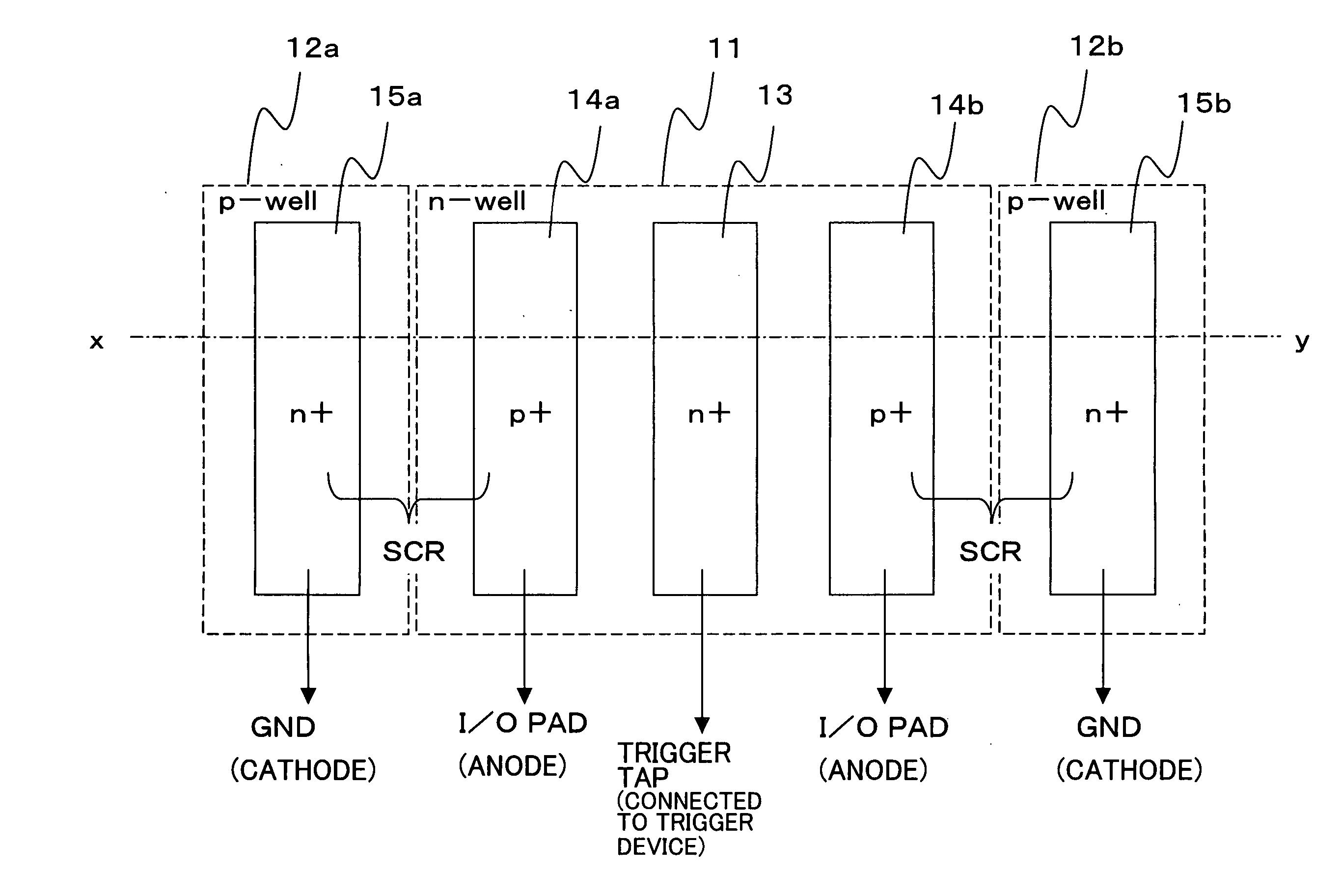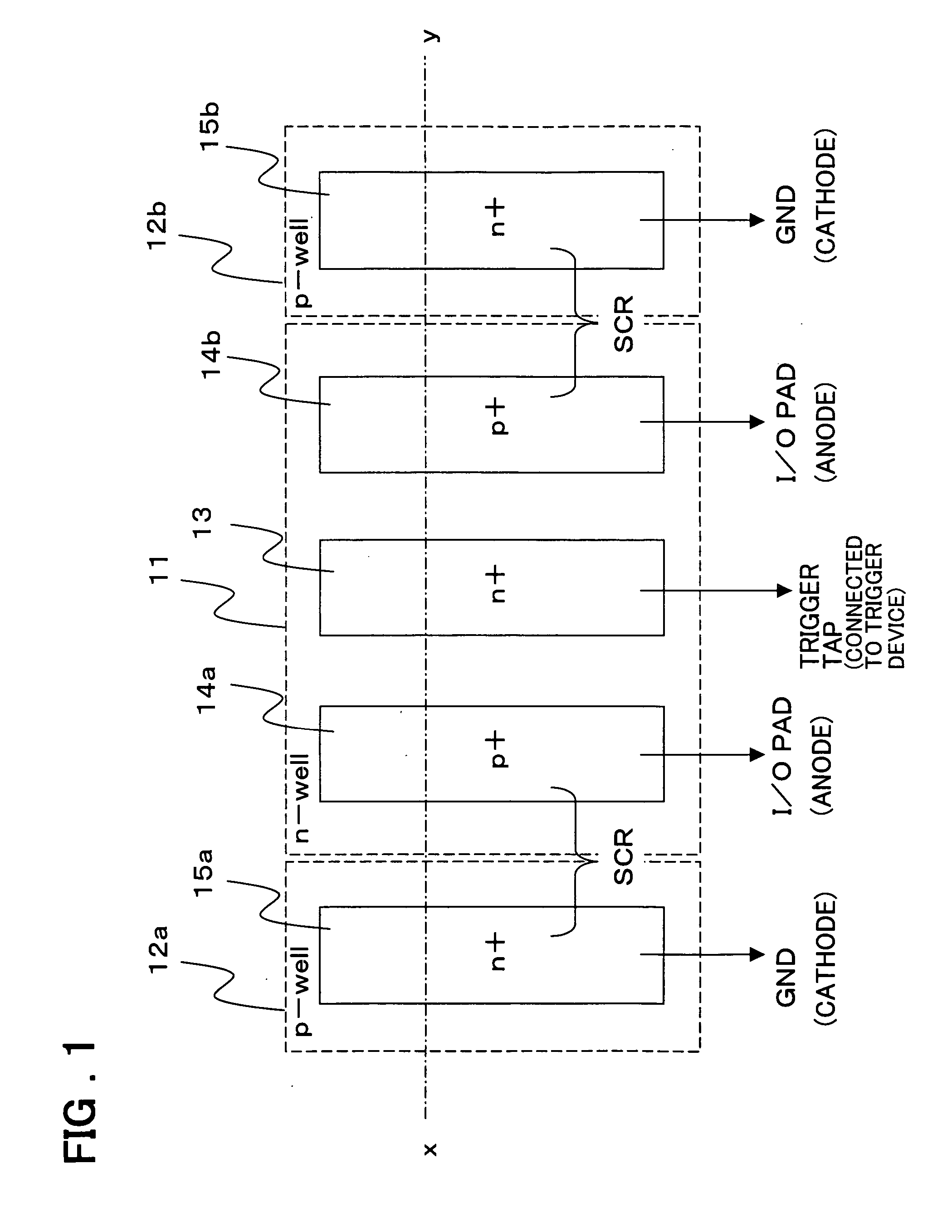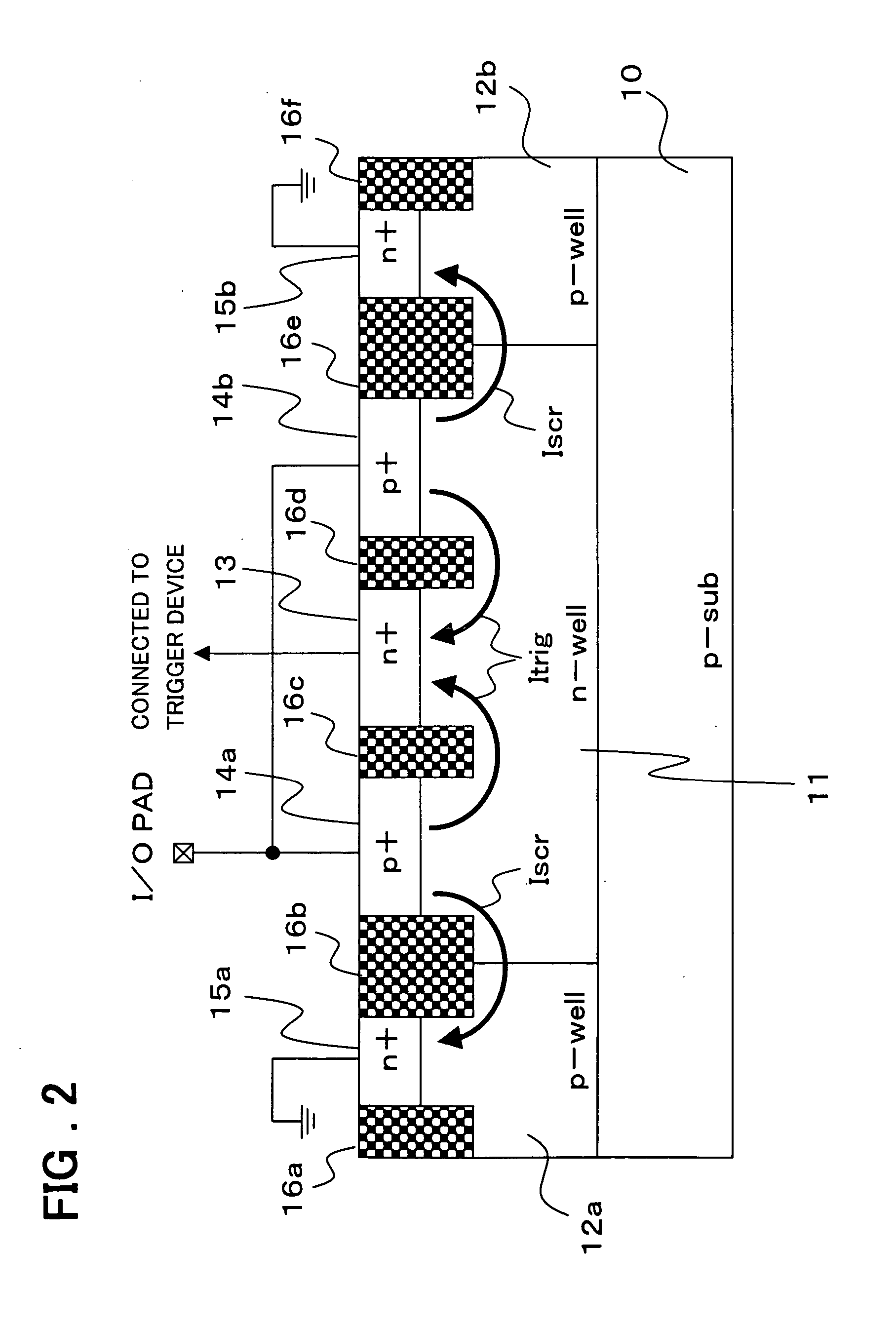ESD protection devices with SCR structures for semiconductor integrated circuits
- Summary
- Abstract
- Description
- Claims
- Application Information
AI Technical Summary
Benefits of technology
Problems solved by technology
Method used
Image
Examples
example
[0029]FIGS. 3A, 3B and 3C are layout diagrams showing each layer of the ESD protection circuit relating to an example of the present invention. FIG. 3A is a layout diagram corresponding to FIG. 1, and the rectangular N-type well 11 is formed in the center with the P-type wells 12 surrounding it. In the center of the N-type well 11, the rectangular high concentration N-type (N+) region 13, to which the trigger electrode is connected, is formed, and the rectangular high concentration P-type (P+) regions 14a and 14b, to which the anode electrode is connected, are formed symmetrically above and beneath this high concentration N-type region 13. Further, facing the high concentration P-type regions 14a and 14b, to which the anode electrode is connected, the rectangular high concentration N-type (N+) regions 15a and 15b, to which the cathode electrodes are connected respectively, are formed on the P-well 12. The high concentration N-type region 13, and the high concentration P-type regions...
PUM
 Login to View More
Login to View More Abstract
Description
Claims
Application Information
 Login to View More
Login to View More - R&D
- Intellectual Property
- Life Sciences
- Materials
- Tech Scout
- Unparalleled Data Quality
- Higher Quality Content
- 60% Fewer Hallucinations
Browse by: Latest US Patents, China's latest patents, Technical Efficacy Thesaurus, Application Domain, Technology Topic, Popular Technical Reports.
© 2025 PatSnap. All rights reserved.Legal|Privacy policy|Modern Slavery Act Transparency Statement|Sitemap|About US| Contact US: help@patsnap.com



